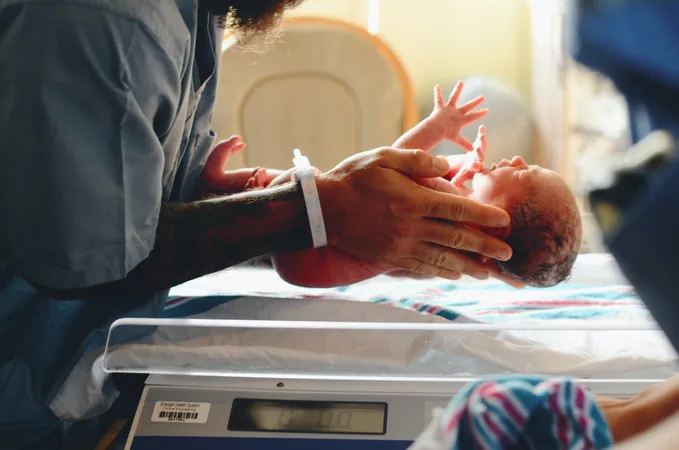
Groundbreaking Computational Model Revolutionizes Maternal Vaccines to Protect Newborns from Infections
2024-12-12
Author: Li
Innovative Approach to Maternal Vaccines
Directed by Assistant Professor Sepideh Dolatshahi and Ph.D. student Remziye Wessel, the team investigates the intricate mechanisms behind selective antibody transfer across the placenta, particularly emphasizing the crucial IgG antibody that provides vital immunity to newborns. Dolatshahi stressed the model's ability to capture the dynamic complexities of placental antibody transfer, surpassing previous research limitations.
“Our mechanistic modeling not only revolutionizes maternal vaccine design but also aids in personalized therapy by evaluating regulatory factors and identifying vulnerabilities at both individual and population levels,” Dolatshahi stated.
This approach marks a significant shift from traditional empirical vaccine design, which often relied on static models or animal studies lacking human physiological relevance. The new model accounts for dynamic changes in placental architecture and maternal immune responses, making it feasible to pinpoint bottlenecks that hinder antibody transfer to the fetus. With this knowledge, researchers can develop maternal vaccines designed to optimize the delivery of essential antibodies to enhance immune defenses in newborns.
Life-Saving Potential for Newborns and Beyond
The ramifications of this innovative vaccine design approach extend beyond newborns, reaching other high-risk populations, including immunocompromised patients and older adults. For infants, particularly those born prematurely who face heightened risks due to incomplete maternal antibody transfer, optimized maternal vaccines could be life-saving. Moreover, the model can guide the creation of vaccines targeting specific infectious diseases that threaten newborns, helping to reduce neonatal mortality on a global scale.
Dolatshahi elaborated, “Consider the placenta as a selective barrier. Our model uncovers which antibodies can navigate through it effectively and at what times, providing crucial insights for vaccine enhancement.”
Equipped with this understanding, the UVA team's ultimate ambition is to craft vaccines that not only augment this natural transfer mechanism but also robustly protect vulnerable newborns during their most crucial early months of life.
Beyond infant care, this modeling approach holds promise for tailoring vaccine strategies for various populations with different immune responses, including those undergoing treatments that suppress the immune system due to chronic diseases. This framework may also clarify how factors such as age, genetic predisposition, and exposure to stressors affect antibody transfer efficiency, setting the stage for a more personalized immunization landscape.
The implications of these findings are remarkable—as scientists continue to unravel the complexities of maternal antibodies, the quest to shield our tiniest and most fragile citizens takes a triumphant leap forward!




 Brasil (PT)
Brasil (PT)
 Canada (EN)
Canada (EN)
 Chile (ES)
Chile (ES)
 España (ES)
España (ES)
 France (FR)
France (FR)
 Hong Kong (EN)
Hong Kong (EN)
 Italia (IT)
Italia (IT)
 日本 (JA)
日本 (JA)
 Magyarország (HU)
Magyarország (HU)
 Norge (NO)
Norge (NO)
 Polska (PL)
Polska (PL)
 Schweiz (DE)
Schweiz (DE)
 Singapore (EN)
Singapore (EN)
 Sverige (SV)
Sverige (SV)
 Suomi (FI)
Suomi (FI)
 Türkiye (TR)
Türkiye (TR)